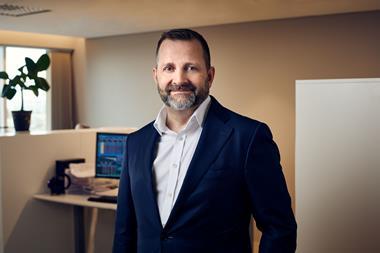The pensions industry relies heavily on consultants, but increasingly, there are calls for them to quantify what exactly it is that they do, and how they do it. In the UK, some of the major consultancies have responded by publishing analysis of their own results – putting into basis points exactly how much value they have added to investment results at pension funds. So what are the consultants doing to improve transparency?
In manager selection, Hewitt, Bacon & Woodrow invites clients to participate in its meetings where the long list of managers is drawn up. Clients can join the manager selection committee – which consists of six people including the most senior manager research people and the consultant – and therefore be fully involved in the process.
“They have access to all the information we have on our managers, so they know why the short list is drawn up,” says Anthony Ashton, investment consultant at Hewitt, Bacon & Woodrow. In practise, he says, some clients attend and some don’t.
Clients, says John Gillies, director of consulting at Frank Russell’s investment group, are very interested in the way the firm makes judgements and the rigorousness of the process. “We have continuous discussions with our clients and we share the ways we consider particular issues.
“Clients have a need as fiduciaries to verify that a procedure they are following is successful, and any suggestion that there’s anything in the fiduciary spectrum that is immune from analysis is wrong,” he says.
Although transparency in consultants’ processes seems to be important to clients, it is also worth being open with investment managers too. Aon’s manager research operation has been evolving, and the global research unit was formally set up at the beginning of 2003 under global research director David Hunter. Hunter has a mandate to develop the unit as a means to produce consistent investment manager research around the world.
A certain level of openness with the managers that the researchers are busy analysing is part of the unit’s function. “We’ve been sharing with the investment managers details of how that investment process works,” says Alvar Chambers, senior investment consultant at Aon in London. “We share with managers the research notes we make on their products.”
This means Aon can clear up any misunderstandings straightaway and get some feedback on the research, which Chambers says is useful as well as contributing towards a more open relationship with fund managers.
The relationship between and investment consultant and managers is an interesting one, says Chambers, which can be confrontational. “But they should also cooperate and work together to help the client.” For consultants, it is a matter of finding a balance between retaining objectivity and sharing information for the benefit of the client.
People are demanding to know in more detail what it is that consultants are contributing to pension fund value. Ashton says: “There’s clearly a lot of debate in the industry about what is the value-added from consultants. How do you assess this?”
Mercer Investment Consulting now measures the value-added of its own recommendations and released the results for the first time in February 2002. It has been updating them every quarter since then, and the data has been analysed going back as far as 1995 or 1996 in most cases.
For each investment product it researches, Mercer arrives at a rating from A, A- down to B- and C. When it formulates short lists of candidates for clients to consider in manager searches, these are usually drawn from the A and A- listed products.
Its methodology for measuring the performance of these ratings entails calculating the performance of the products based on the ratings as they stood at the end of the previous quarter – so there is no element of hindsight in the analysis. These quarterly results are then compounded to calculate performance over long periods. Then, it subtracts the return for an appropriate benchmark index to arrive at value-added. It also calculates the information ratio as a risk-adjusted measure of the value-added.
According to Mercer’s summary of value-added through its manager research recommendations, by June 2003, it had added an average of 2.5% pa in all equity categories since inception (mostly 1995 or 1996), and 0.5% pa for fixed income categories.
The prompt to formalise the measurement came from a mixture of internal and external demand. “We’d always thought that it was a sensible thing to do from internal management purposes if nothing else,” says Bill Muysken, global head of research at Mercer. “We wanted to monitor how effectively we were doing our job… and clients were asking – have you got any proof?”
In a similar vein, Watson Wyatt released its first ‘Model Portfolio’ track records in May last year. They show how an institutional investor might have performed if they had placed assets with investment managers recommended by the firm in key asset classes. Watson Wyatt had been running notional portfolios of managers internally for three years before ‘going public’, and decided to publish the findings as part of a move towards greater transparency – in line, it said, with trends in the industry.
During the three-year period from inception, all of its 13 Model Portfolios outperformed their benchmarks before transition costs and fees, though after this outlay, one – the emerging markets portfolio – did underperform.
Ashton says that Hewitt, Bacon & Woodrow, rather than having straightforward lists like this, has a process where they go through the services they provided with the client and assess how happy the client has been.
“The results are pretty good. We have high levels of customer satisfaction,” he says.
The assessment is not solely on manager performance, he says, because that is only one part of the service the firm provides.
The assessment takes the form of a questionnaire which asks whether the consultant has made the client aware of issues – have they been proactive? How well have they briefed the client on these issues? What was the recommendation, and what has been the impact of the decision taken?
The firm measures both the decision-making process as well as the decision, says Ashton. This method of assessment lets the client weight the result according to what they consider to be important – and this makes it different from the published performance lists of Mercer and Watson, which, he says, only measure one aspect of advice, and don’t necessarily measure the aspect that the client believes is important.
And what the client’s judgement is, affects the fee it pays. “‘The client rates us on how well we have done… and we have performance-related fees based on that,” says Ashton.
Aon, says Chambers has essentially one research team that gives advice both to the investment consultancy business and Aon’s asset manager business – which manages a series of multi-manager funds. “Going forward, those multi-manager funds provide a shop window for our investment advice – so that’s something that stands up to scrutiny, something we can’t manipulate.”
Other firms have chosen to use external auditors to assess and vouch for the quality of the service they provide. But Aon has not gone down that route. “We don’t feel that’s necessary as we have these funds with very visible performance based on the same advice as we would give our clients,” says Chambers.
Sometimes, though, there are different ratings given to products which invest in the same way, he says. For example, the pooled and segregated version of one type of equity fund might not be rated the same for various reasons, and this could cause a client’s portfolio to diverge in its performance from a multi-manager fund.
Gillies at Russell also points to the group’s multi-manager funds as proof of the effectiveness of advice the consulting arm would give. “We run our own multi-manager funds which represent the implication of our advice. Those are in the public domain, and people can easily see for themselves what we’re doing,” he says.
Periodically, Russell analyses the results of its opinions in all the asset classes, and shares that information with its clients, though this is not done in a formal way.














No comments yet